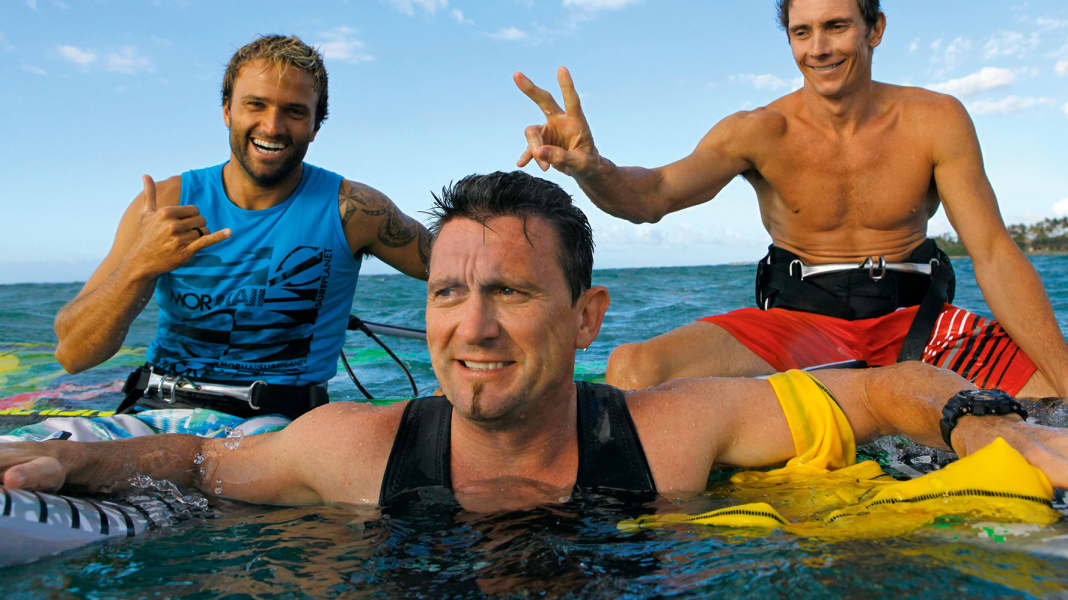
(Photo above: Kauli Seadi (left) and Jason Polakow (right) had a lot of fun with their then boss Martin Brandner (centre) at the 2012 photo shoot
Martin Brandner was one of the string-pullers in the surf industry for many years. As F2 brand manager, he not only successfully managed the brand, but also world champions such as Björn Dunkerbeck. At the beginning of the 2000s, they parted ways and Brandner, as one of the founders of the JP-Australia brand, was responsible for the unique success story of the young company centred around wave icon Jason Polakow and freestyle hot-shot Josh Stone. At the same time, the Austrian was also heavily involved in the management board of the PWA World Cup, where he pushed freestyle and the new discipline of supercross - which unfortunately no longer exists. In 2005, he initiated the introduction of slalom racing on production boards.

JP Australia and Brandner divorced in 2018. Since then, Martin Brandner - now 57 years old - has made up for a lot of things that were neglected in his life as a manager: Spending time with his family, indulging in windsurfing as a hobby, enjoying the best powder days in the mountains and keeping fit with plenty of training for these activities.
Martin Brandner is now returning to surfing on a completely different level: "I want to take windsurfing training to a whole new level." We wanted to find out more and asked him about it.
Before we come to your new project: Why don't you briefly tell us how you ended up in the surfing industry?
I'm actually a mechanical engineer by training. However, I never worked purely as a technician, but worked in marketing for a company with technical products for four years straight after my training. Then I went to the USA for a year to study marketing and improve my English. This year had a huge impact on me as I had great professors who worked for Nike on the side. As I was an avid windsurfer, I then had the idea to offer a German windsurfing magazine a story about the Gorge. That worked out and when I came back to Austria, it persuaded me to apply to F2. A year later, I was invited for an interview and became the managing director's right-hand man.
During your time at F2 and JP-Australia, who were your most interesting team drivers?
It's a bit like someone asking you, as the father of several children, which one is your favourite. I did the maths a while ago and realised that I've worked with or sponsored over 100 drivers in total. So that makes it quite difficult for me to answer this question. Although it was often quite nerve-wracking, working with the athletes was an aspect of my job that I particularly enjoyed. I could write a book about the numerous anecdotes with my riders. The personalities were also so fundamentally different - that also made it very exciting. Björn Dunkerbeck, Antoine Albeau, Micah Buzianis, Amado Vrieswijk, Morgan Noireaux, Bernd Flessner and Steven van Broeckhoven were complete professionals who you could rely on in every respect. Jason Polakow and Josh Stone, on the other hand, were completely different and enjoyed life as windsurfing pros to the full - which didn't always make it easy for me. Kauli Seadi, on the other hand, was Mr Super Cool again, who generally did what he wanted.
For Ricardo Campello, who joined us as a 15-year-old, I almost had to take on a bit of a father role at the beginning. Although we clashed quite often, he was still one of my favourite riders - I really do think he is one of the most talented windsurfers of all time. In general, however, I have to say that I really enjoyed working with all of them. I was very lucky that I was able to choose each and every one of them myself - that's why they were always a good fit for my brands and my vision for those brands. I've worked with some of them for so long that they've matured from slightly crazy teenagers into great personalities. This was especially true with Jason. I still have a great friendship with him and Micah Buzianis.
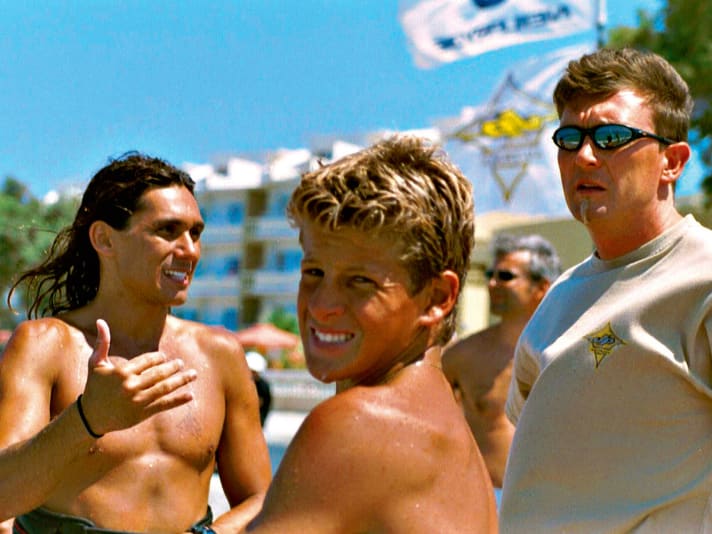
Which boards do you think were milestones that you developed at F2 and JP?
Phew, there were quite a few. The Sputniks were probably the most successful series slalom boards of all time. However, the fact that they weren't easy to ride and jibe probably didn't do the sport any favours. Then there were Axxis and Xantos, which we sold in their thousands - nobody can imagine that today. They were still produced in Austria. You had to sell quite a few to make a mould set worthwhile. Xantos was the first freeride line where the lightness of being was more important than top performance. My philosophy with JP was that the board name explains the area of use. Freestyle Wave, All Ride, X-Cite Ride and later the Magic Ride line were our bestsellers. X-Cite Ride and Magic Ride were, so to speak, the further development of the Xantos concept. Personally, I have always enjoyed riding the sporty Super Sport boards.
After your separation from JP, you toyed with the idea of starting out again elsewhere in the board or sailing sector. Why did you actually decide against it?
It just wasn't the right thing for me and I didn't really want it any more. After 28 years of constantly flying around the world, managing two brands and establishing them among the top brands - or building JP completely from scratch. After doing all that, I lacked a bit of motivation. To start something completely new again and to build up a whole team and create a brand or to carve out a place in the market for an existing brand. I'm very lucky that it didn't have to be, so I decided to just enjoy life. I had this dream of leaving working life earlier than usual anyway.
How did you use your free time?
Simply summarised: for family, travelling, my motorhome, windsurfing, skiing, SUPing, motorcycling and sport, sport and sport.
What motivated you to get involved in training?
During my time at JP, I often thought to myself that one of the biggest problems with windsurfing is that so many people actually fail at the jibe. Many give up at this point and others simply accept that it doesn't really work and live with it. But then the water start goes like a dream. I've stood on beaches so often and thought to myself that a very high percentage of windsurfers don't really get to enjoy this fantastic sport because they very often fall in with their jibe or don't glide through it. But the fun of windsurfing only begins with a jibe that glides through. We have always endeavoured to offer boards that jibe extra easily. But even these boards don't jibe by themselves - and if you don't know or apply the most important points of a jibe, it simply won't work. Even back then, I thought to myself that something should actually be done to help people get over this point.
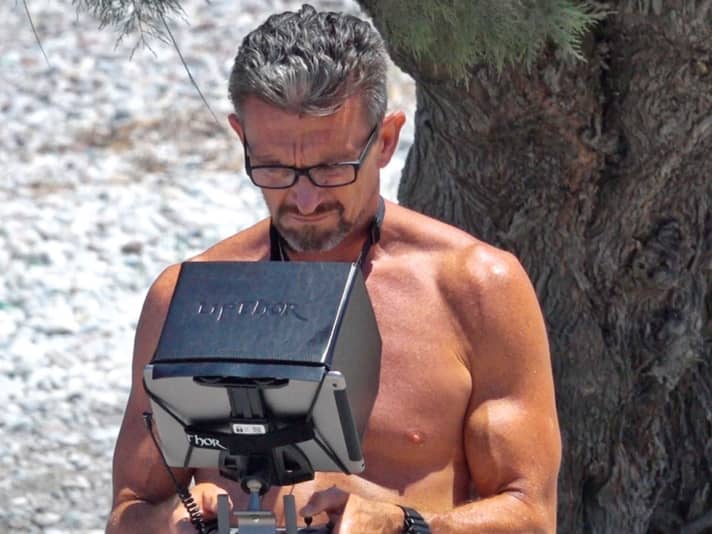
Windsurfing has given me everything in my life - my absolute dream job, where I could combine my passion with my profession. And it gave me the opportunity to work with great people - World Cup riders, staff, colleagues, media representatives, producers and international clients and to live, think and travel the world more or less day and night windsurfing. Ultimately, windsurfing also allowed me to live my dream and only do what I enjoy. I would therefore like to give something back to windsurfing with this camp by helping the camp participants to have even more fun. Because the jibe finally works, they can plane and become really fast.
What is special about your camp? What makes it different from other successful and proven camps?
I have developed a completely new type of jibe simulator that can be used to practise the most important steps of the jibe on the beach. In addition to rig control, it can also be used to simulate the edging of the board, the pressure on the mast foot, the correct weight shift and sail shifting with wind pressure.
I also use a detailed drone video analysis and can stay in contact with the participants on the water via radio. The 4K videos and photos that I take of all participants are of course sent to everyone on a USB stick. For those who are interested, there is also a special fitness training programme with warm-up and stretching exercises for windsurfing. Yes, and then there are the many stories that I have experienced after 28 years as a manager in the windsurfing industry, especially in connection with my riders. They always make for a very entertaining evening programme.
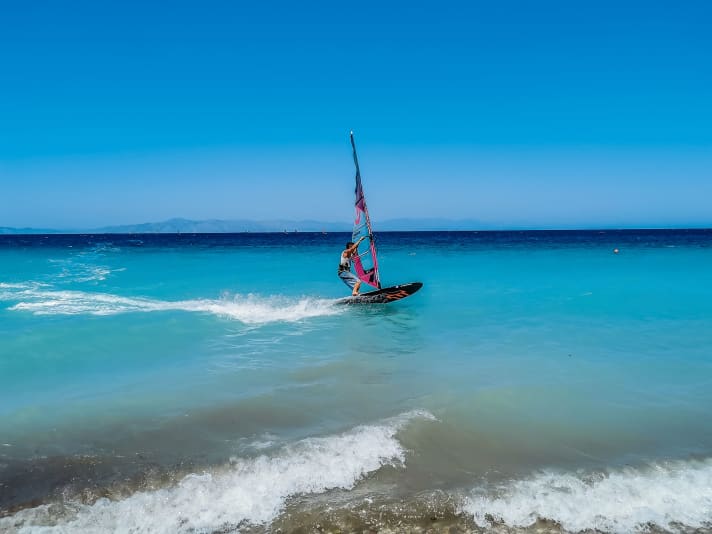
In your camp, it's primarily about jibing. Is that the key manoeuvre in windsurfing for you?
Yes, of course! As I said before, that's where the fun of windsurfing begins for me. Unfortunately, the typical career of a windsurfer is that they do a beginner's course once, which enables them to go out and in. This is often followed by a harness and waterstart course at best, and then most windsurfers try the concept of learning by doing. As an 18-year-old, I was also one of these self-taught windsurfers - but from the very beginning. The only time I stopped was at the jibe. I was on the verge of giving up windsurfing - but thankfully
but then, thank God, three years later I decided to take a jibe course on Lake Garda - and within a few days and after just a handful of tips, it worked.
For me, it's a very special phenomenon in windsurfing that so few people do advanced courses. It's very different in other sports. Dedicated tennis players take a few coaching lessons every now and then to refine their technique. I personally had another key experience. I am a state-certified ski instructor (Austria) - but I did this training 35 years ago. There were no carving skis back then. When I was at F2, I had only been snowboarding for many years, then carving skis came along. Of course, I had to try it out straight away and was very surprised because it didn't really work very well. So I decided without further ado to take a good ski instructor for a day and within a day I had the carving technique down.
You have developed and built your own jibing simulator. Explain the principle behind it.
I don't really want to give away too many details, otherwise it might be copied straight away. I use a normal windsurfing board, which is mounted on a rotating plate that can move in three dimensions and also rests on air cushion elements. By controlling the rig, I can make the board luff and drop - because moving the rig causes the board to rotate around a defined centre point. The air cushion elements can be used to simulate the necessary weight shift during a jibe.
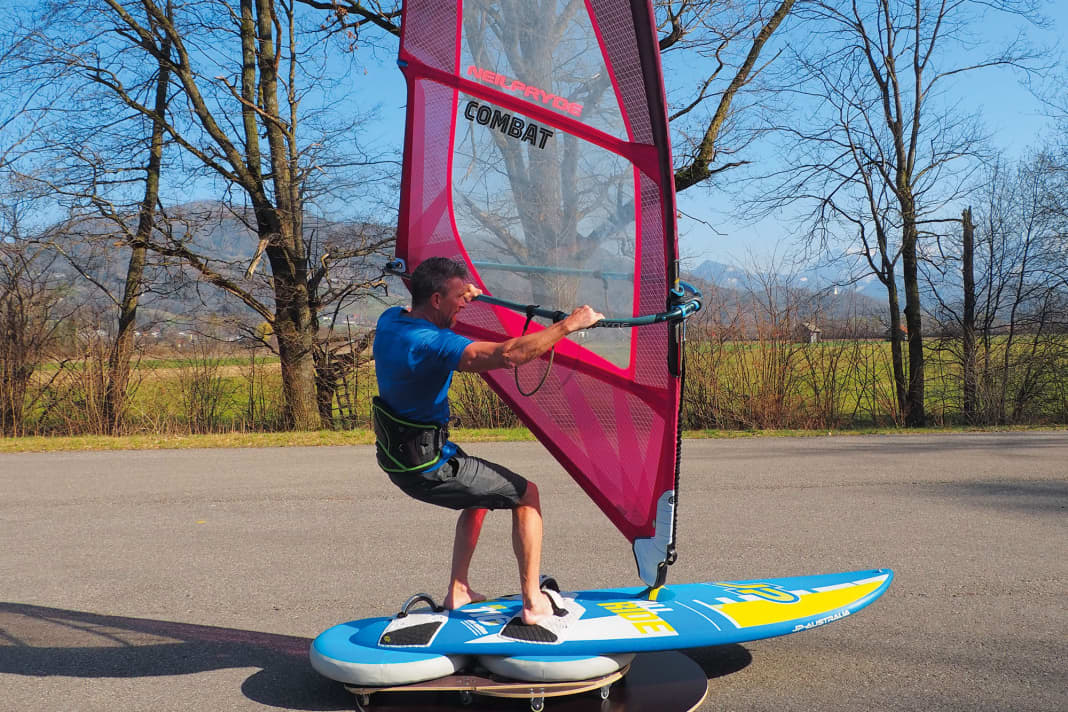





So far, a camp is planned for September on Rhodes. Would you like to organise more camps, possibly with different content and at other locations?
Let's see how it all develops. This whole thing isn't just about my camp. I have this dream that more people will simply decide to do a jibing or advanced course - or just take a few individual lessons to really experience the full dimension of this fantastic sport. But yes, if there is demand, I can imagine organising more camps. But the focus will probably remain on the power jibe, because for me it's the key manoeuvre in windsurfing.
You can find more information about the "Jibe, Speed, Fitness & Fun" camp at Jürgen Niens and Bertrand Crausaz's Pro Centre on Rhodes at right here-> Phone Surf and Action +49 89 6281670

